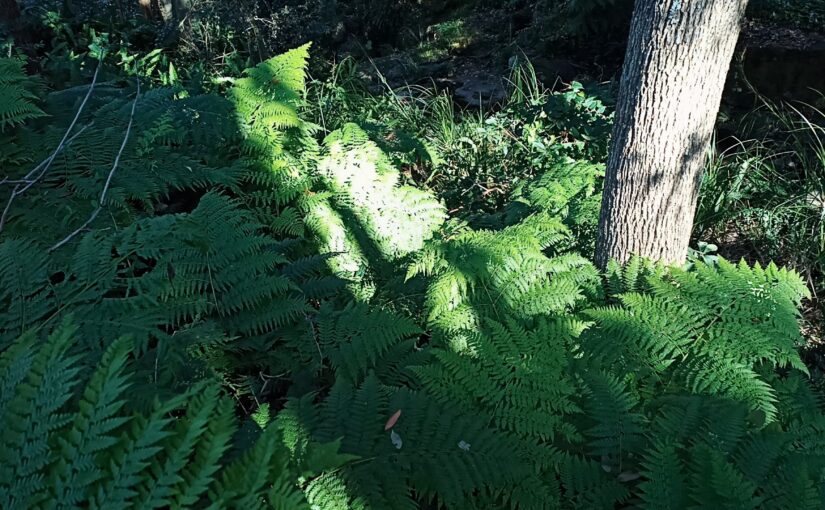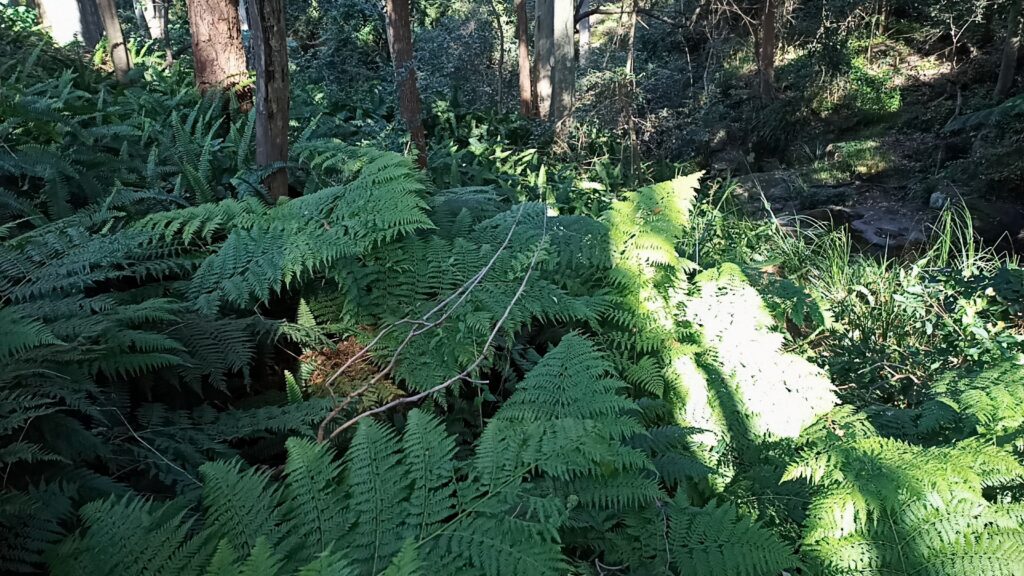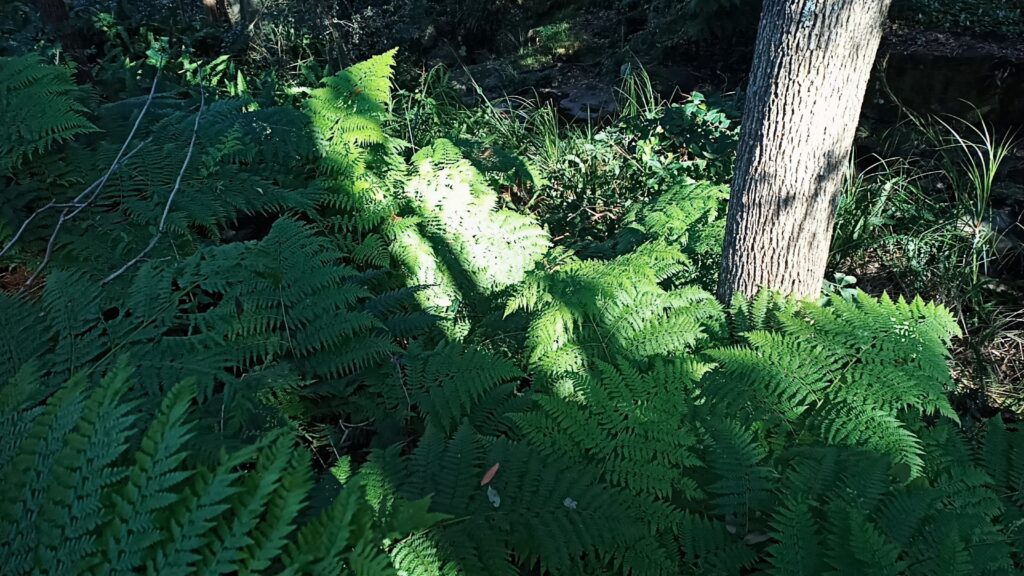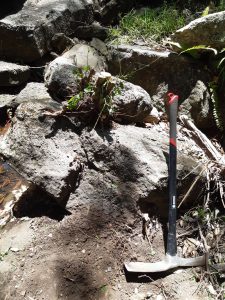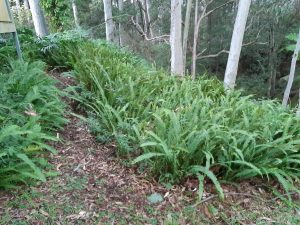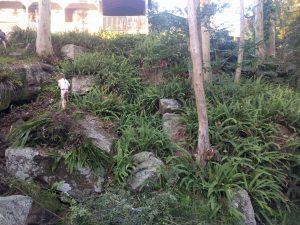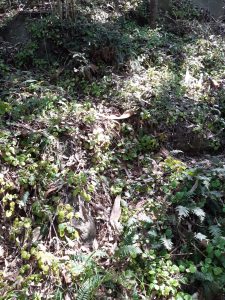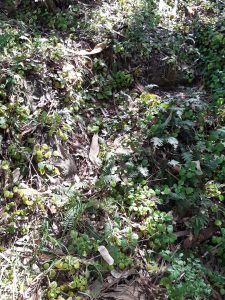It was a late start for Sunday’s working bee but it still turned out to be a productive day.
Mist flower is popping up again in numbers. Grrrr. I am not sure if that one will ever completely disappear. It seems fairly well established in the seedbank. Some of the plants grow in very difficult to access locations so they do not get removed as quickly as I would prefer.
One win I noticed on the weekend is the false bracken fern on the East bank after first fall. I had noticed a few struggling bracken ferns amongst the fishbone fern about twelve months ago. I cleared around those and they expanded and I cleared around that and it has expanded again. It appears the false bracken fern is very capable at taking on the fishbone fern. when it gets a chance.
Another win was a dead camphor laurel tree which the green team had dealt with in their last visit. A bunch of privet was also killed via glyphosate. I typically avoid using herbicides but then, I tend to end up with situations as seen at ‘Glen’s alley’ which has a troubling number of privet saplings and trees springing up.

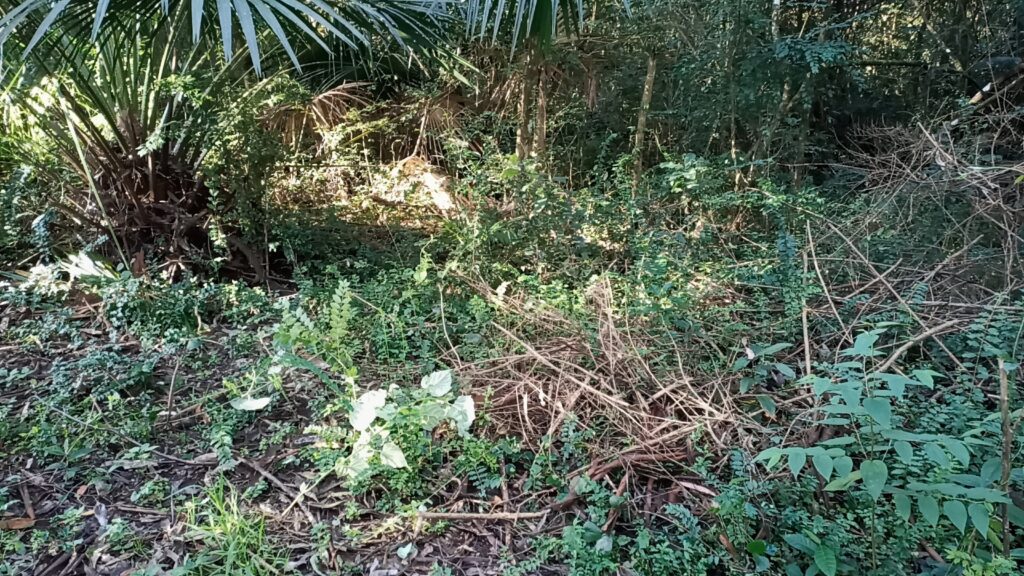
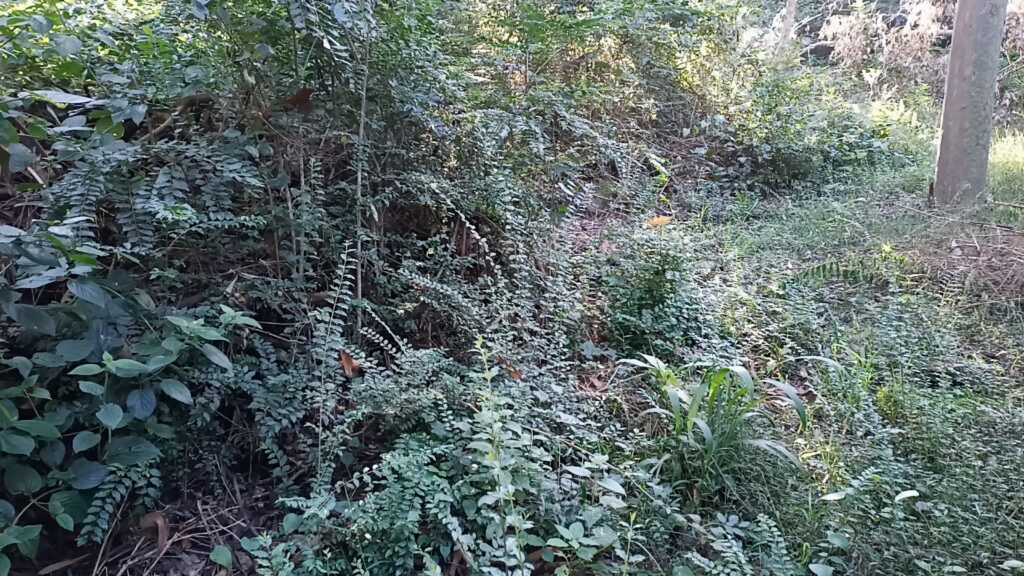
My original intention was to start on the area in the photo above but instead, I learned a large, dead, rotting tree had finally fallen. I had noticed it a long time ago and was amazed it was still standing given the amount of rot at the base. Finally it has come down.
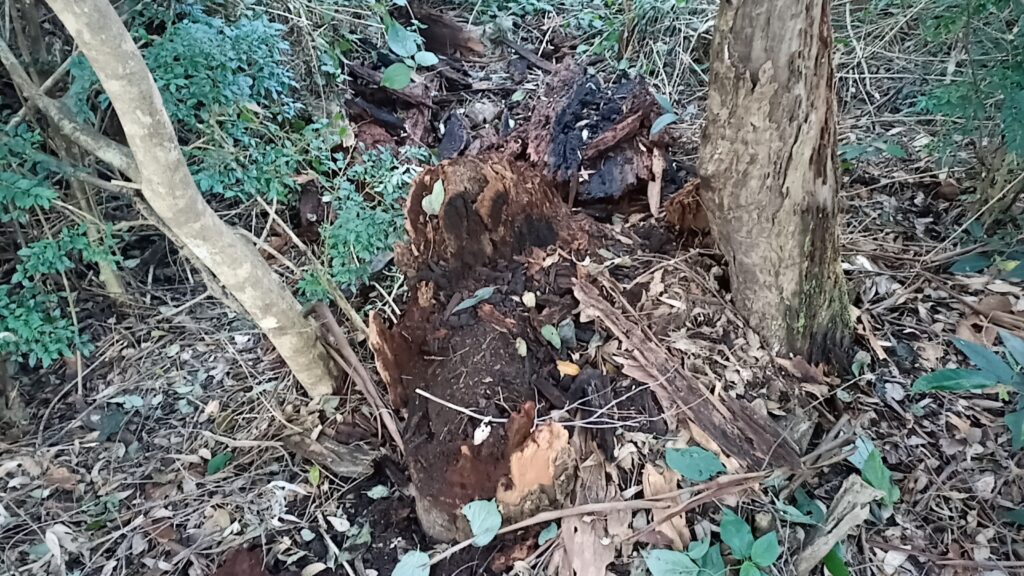
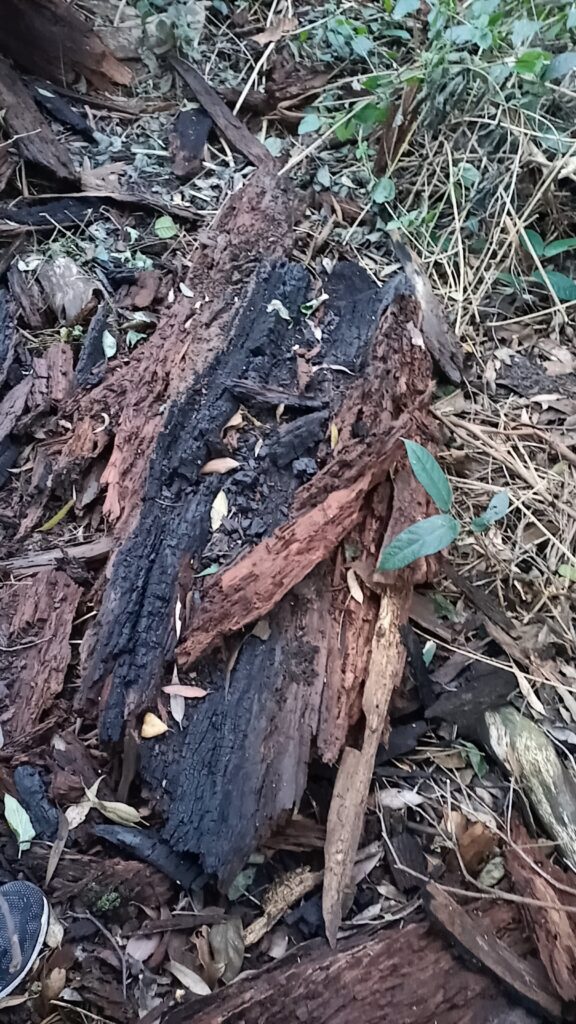
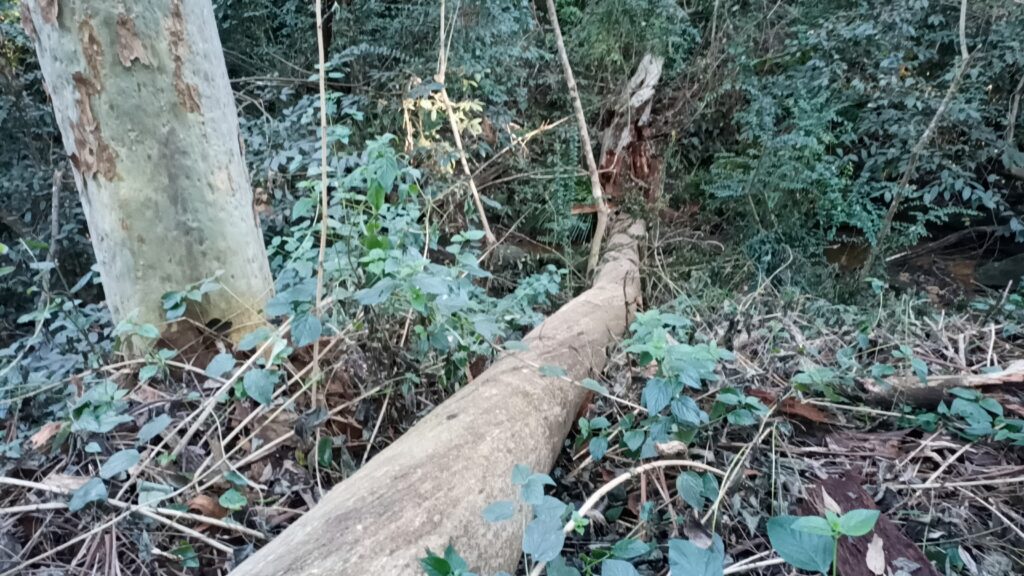
Rather than let the lantana close in on the vacated space, I thought I would open up the area for the nearby sandpaper fig trees which are sure to appreciate the extra light.
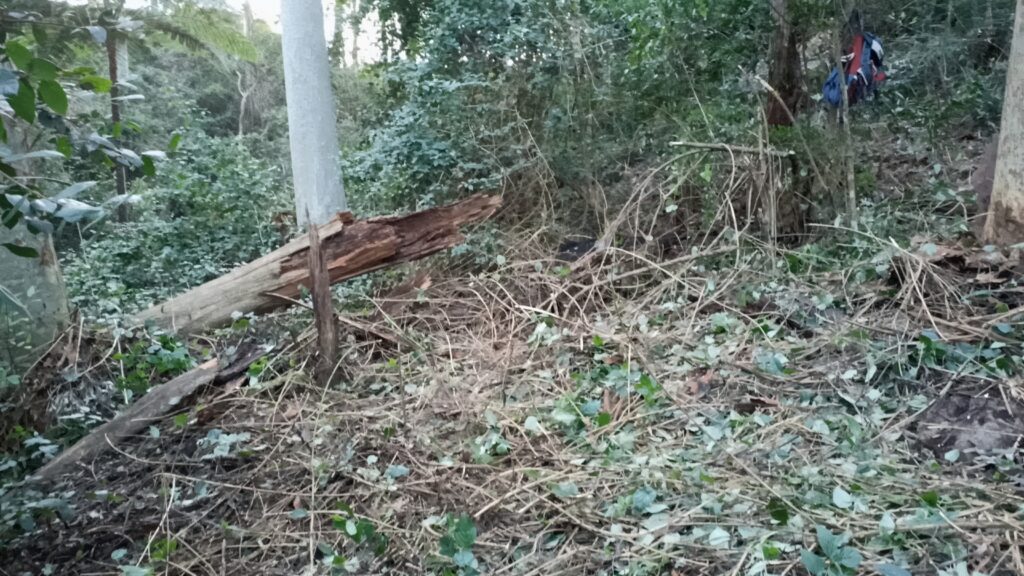

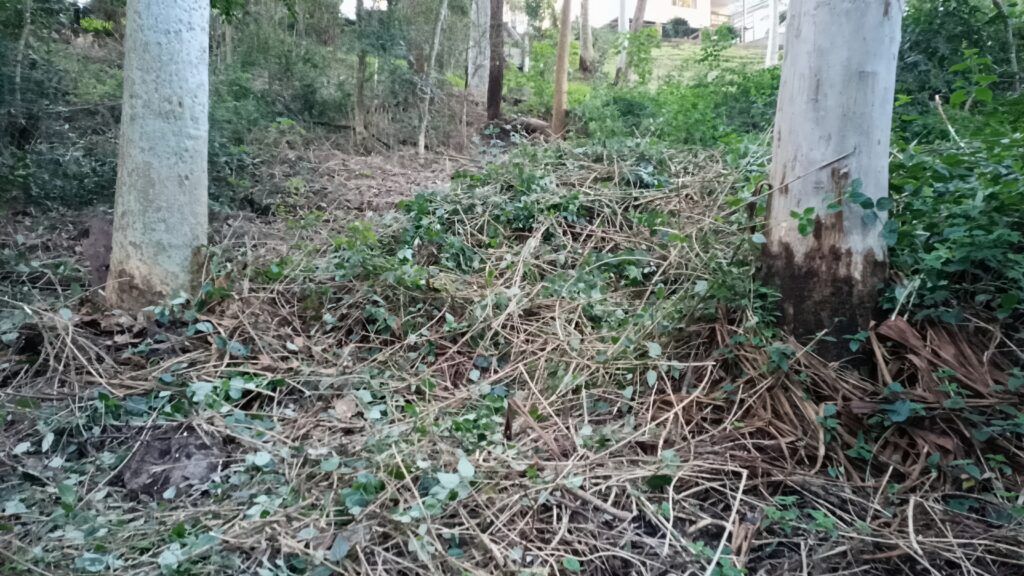
I have a long list of areas that need attention so I will need to get to work a bit earlier next week. That privet beckons me…
